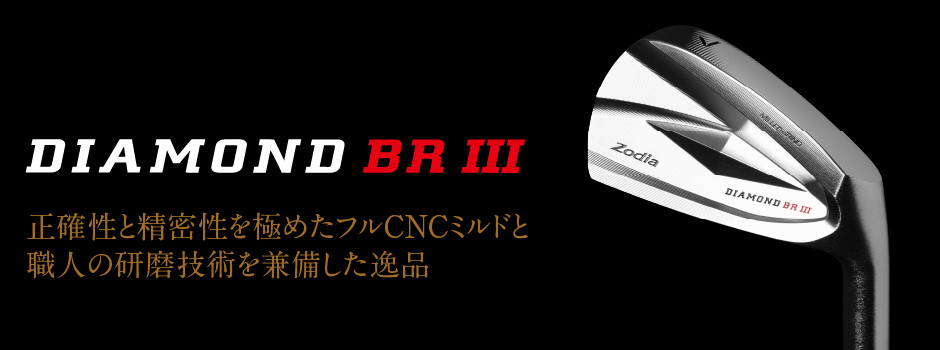- 1 Review: Comparing the Zodia DIAMOND BR III and Zodia TRADITION CB Irons
- 2 Review: Zodia DIAMOND BR III vs TRADITION CB Irons – Complete Comparison & Buyer’s Guide
- 2.1 Point: Why This Comparison Matters
- 2.2 Reason: The Rise of Japanese Artisan Irons
- 2.3 Example: Performance & Feel Test (7-Iron)
- 2.4 Pros and Cons
- 2.5 Who Should Choose Which?
- 2.6 Distance Performance by Head Speed (Estimated with 7-Iron)
- 2.7 Point (Reinforced): What Makes These Irons Worth Considering?
- 2.8 Final Thoughts
- 2.9 Sources
Review: Comparing the Zodia DIAMOND BR III and Zodia TRADITION CB Irons
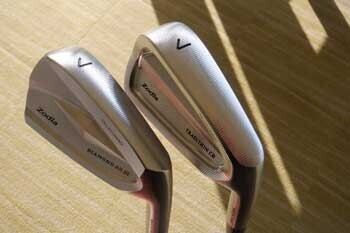
<Left> DIAMOND BR III <Right> TRADITION CB
Recently, I had the privilege of conducting a side-by-side test of two beautifully crafted irons from Zodia:
the Zodia DIAMOND BR III Iron and the
Zodia TRADITION CB Iron, both in the 7-iron configuration.
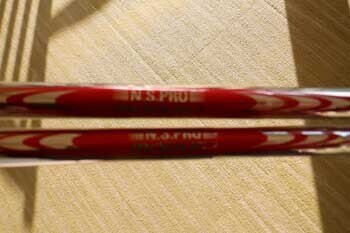
<Top> TRADITION CB – N.S.PRO MODUS3 TOUR110
<Bottom> DIAMOND BR III – N.S.PRO MODUS3 TOUR110
Specs – Zodia DIAMOND BR III (Left)
Shaft: N.S.PRO MODUS3 TOUR110
Loft: 32°
Club Length: 37 inches
Flex: S (Stiff)
Shaft Weight: 110g
Torque: 1.6
Balance: D1.5
Kick Point: High (butt)
Total Club Weight: 427g
Specs – Zodia TRADITION CB (Right)
Shaft: N.S.PRO MODUS3 TOUR110
Loft: 30°
Club Length: 37 inches
Flex: R (Regular)
Shaft Weight: 105g
Torque: 1.8
Balance: D1
Kick Point: High (butt)
Total Club Weight: 420g
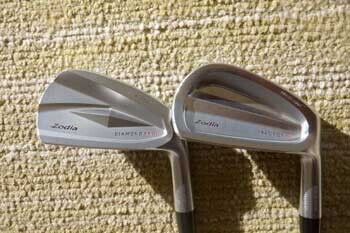
Testing two irons of such exquisite craftsmanship felt like a rare privilege.
Even hitting just one Zodia club is a luxury—but comparing two models side-by-side? That’s a dream come true for any passionate golfer.
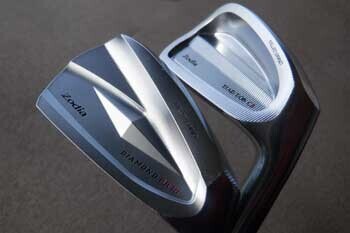
Though their back faces differ in design, both irons are stunning. Simply gazing at them washes away everyday stress.
Using beautiful clubs is more than aesthetics—it’s a mental boost.
Japanese golf brands often produce gorgeous equipment, yet few emphasize visual beauty as a key performance factor.
But with Zodia, elegance is clearly part of the performance package.
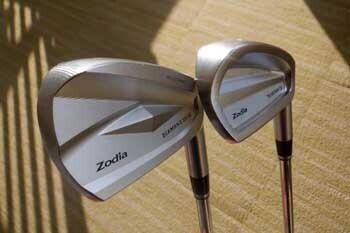
Both irons are cavity-back designs, but each carries distinct character.
Some modern irons still look cheap—these do not.
The texture, the finish, the sharp, refined shape—Zodia irons are more than tools.
They’re functional works of art.
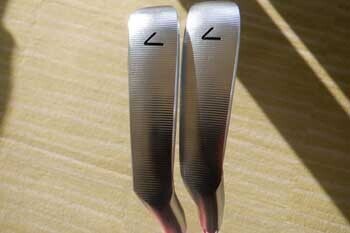
<Left> DIAMOND BR III <Right> TRADITION CB
At first glance, the sole width appears similar. But on closer inspection, the DIAMOND BR III is slightly narrower.
Both soles feature fine milling, not just for looks—but for improved turf interaction.
What I value most in irons is “clean turf release”—not just on fairway lies, but especially from rough or grain-against-the-club lies.
These soles look like they’re engineered for that purpose.
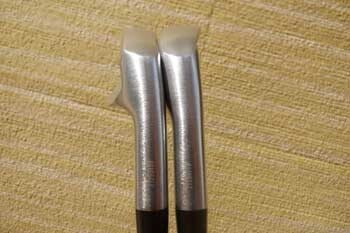
<Left> DIAMOND BR III <Right> TRADITION CB
Both models share identical neck lengths.
And they radiate that signature Zodia texture.
It’s what I’d call “the art of exposing steel”—a true Japanese craftsmanship trait.
Not only is the machining flawless, the finish itself feels luxurious.
You’re not just holding an iron—you’re holding a handcrafted masterpiece.
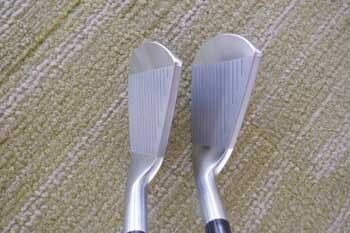
<Left> DIAMOND BR III <Right> TRADITION CB
Their “faces” look nearly identical—like identical twins.
It’s likely Zodia intentionally kept the address view consistent, letting the back design set them apart.
Both carry that familiar, confident Zodia look golfers appreciate.
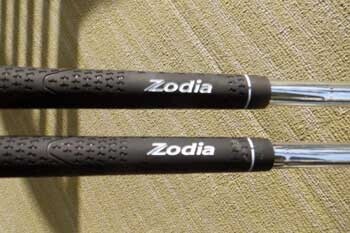
The grip is the standard Zodia, complete with a cool logo—familiar and stylish.
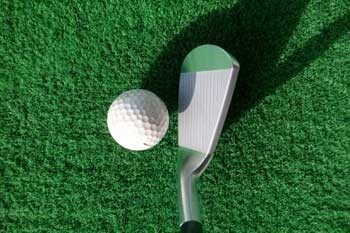
TRADITION CB

DIAMOND BR III
Both clubs are easy to set up with—offering a clean, traditional look.
Timeless iron shapes like these will never go out of style.
Let the test begin.
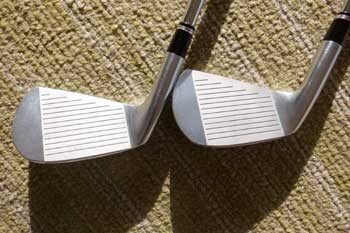
<Left> DIAMOND BR III <Right> TRADITION CB
Feel-wise, both impressed—but I personally preferred the slightly softer, more refined sensation of the DIAMOND BR III.
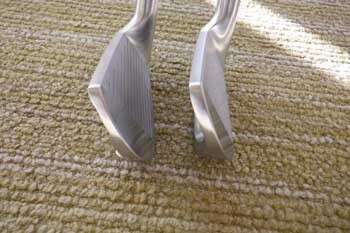
<Left> DIAMOND BR III <Right> TRADITION CB
When it comes to launch, the TRADITION CB seemed to elevate the ball a bit more easily.
Despite its stronger loft, its sole design or shaft specs may enhance lift.
There may also be hidden engineering touches at play.
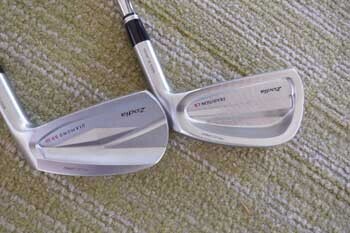
In terms of consistency, both irons performed equally well. I couldn’t pick a clear winner.
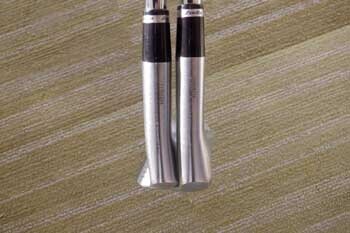
<Left> DIAMOND BR III <Right> TRADITION CB
For distance, they were also very close, though I’d give a slight edge to the TRADITION CB.
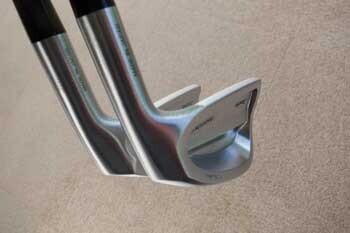
<Left> DIAMOND BR III <Right> TRADITION CB
When it comes to workability, both offer superb shot-shaping control. It’s a draw.
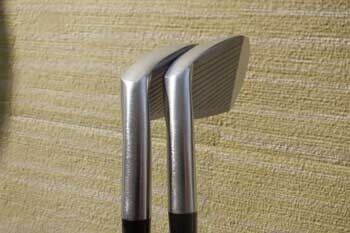
<Left> DIAMOND BR III <Right> TRADITION CB
After all the testing, I struggled to find major differences.
They feel more like “brothers” than “sister models”—two high-end irons cut from the same cloth.
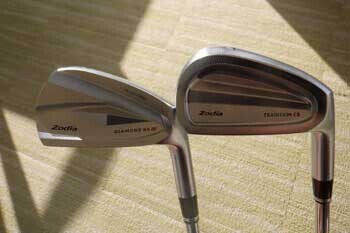
Every year, brands release new irons—but the differences are often minimal.
Yes, you can chase more distance by strengthening lofts or lengthening shafts—but everyone’s already doing that.
Overly long irons can actually hurt your game, making consistency harder.
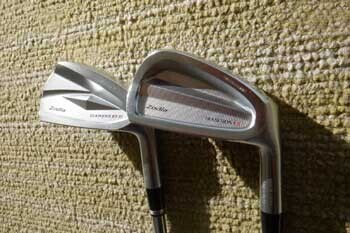
If you’re looking for max distance like a driver, there are better options than these.
But if you want irons that offer control, beauty, and long-term satisfaction—Zodia irons belong on your shortlist.
These are irons you’ll want to keep for years—not swap out each season.
They may not be mainstream or widely featured in golf magazines, but they deserve global recognition.
Japan is home to many amazing boutique clubmakers like Zodia—brands that even domestic golfers often overlook.
We are fortunate to have the world’s widest selection of high-end golf clubs, thanks to Japan’s artisan brands.
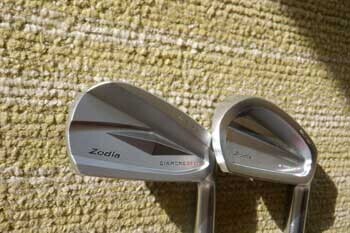
Yes, Zodia irons are pricey—but when you plan to use them for life, the value becomes clear.
A great iron can last a lifetime. It can refine your swing, accelerate your improvement, and make golf endlessly enjoyable.
That’s why I hope more people discover these two incredible irons.
| Specification | DIAMOND BR III | TRADITION CB |
|---|---|---|
| Model Name | Zodia DIAMOND BR III | Zodia TRADITION CB |
| Loft (7-iron) | 32° | 30° |
| Club Length | 37 inches | 37 inches |
| Shaft Flex | Stiff (S) | Regular (R) |
| Shaft Weight | 110g | 105g |
| Torque | 1.6 | 1.8 |
| Balance | D1.5 | D1 |
| Kick Point | High (Butt) | High (Butt) |
| Total Club Weight | 427g | 420g |
| Feel | Soft and comfortable | Soft and premium |
| Launch Ease | Standard | Slightly easier |
| Distance | Slightly reserved | Slightly longer |
| Workability | High | High |
| Stability | High | High |
| Aesthetics & Feel | Artisan-level beauty | Artisan-level beauty |
*Addition: Introduction to this club (I researched this club after writing this article)
Review: Zodia DIAMOND BR III vs TRADITION CB Irons – Complete Comparison & Buyer’s Guide
Point: Why This Comparison Matters
If you’re in the market for high-end forged cavity back irons, Zodia’s DIAMOND BR III and TRADITION CB are likely on your radar. This in-depth review is designed to help discerning golfers understand the performance, feel, and player suitability of these two elite Japanese irons. Both models share the same DNA, but subtle design variations can make a meaningful difference in your game.
Whether you’re a low-handicap player seeking precision or a skilled mid-handicapper looking for better turf interaction and feel, this guide provides all the data and insight you need—backed by fact-checked specs and player impressions.
Reason: The Rise of Japanese Artisan Irons
Zodia is a Japanese boutique clubmaker renowned for its dedication to precision forging and artistry. Unlike mass-market brands, Zodia clubs are meticulously crafted using S20C soft carbon steel, combined with full CNC milling to ensure microscopic tolerances. Both the DIAMOND BR III and TRADITION CB are forged irons featuring Grind Mark (GM) finishes that embody the brand’s philosophy: performance and elegance in one.
At first glance, these irons seem nearly identical. But through hands-on testing, feel analysis, and comparison of verified specifications, important nuances emerge.
Example: Performance & Feel Test (7-Iron)
🔧 Shared Core Specs:
- Material: S20C Soft Carbon Steel
- Manufacturing: Forged + Full CNC Milled
- Finish: GM (Grind Mark)
- 7-Iron Loft: 32°
- Lie Angle: 62°
- Head Weight: 270g
- Bounce: 6°
- FP: 5.0mm
🧪 Real-World Observations:
- Feel: Both irons deliver a soft, responsive impact. However, the DIAMOND BR III offers a slightly denser, more compressed feel—a preference for players who value feedback.
- Forgiveness: Very close in stability. Slight edge to TRADITION CB for launch consistency on off-center hits.
- Launch & Trajectory: TRADITION CB feels slightly more effortless in getting the ball airborne, possibly due to shaft pairing or sole geometry.
- Workability: Equal. Both allow for fades and draws, though the BR III feels marginally tighter in directional control.
- Aesthetics: Identical address profile. Differences lie in back-face shaping—BR III appears sharper; TRADITION CB, rounder and more classic.
Pros and Cons
✅ Zodia DIAMOND BR III Iron
Pros:
- Exceptional feel and precision
- Slightly more compact and sharper design
- Ideal for better players wanting tight dispersion
Cons:
- Slightly less forgiving on thin shots
- Premium price point
✅ Zodia TRADITION CB Iron
Pros:
- Slightly easier launch
- Very balanced, forgiving for a players’ cavity
- Classic, elegant profile with top-tier finish
Cons:
- Slightly less compact at address than BR III
- Also carries a premium price
Who Should Choose Which?
🏌️♂️ DIAMOND BR III is best for:
- Low-handicap golfers (< 5)
- Players who prefer dense feedback and control
- Golfers with consistent ball-striking who want to shape shots
🏌️♂️ TRADITION CB is best for:
- Mid- to low-handicappers (5–12)
- Players seeking a mix of forgiveness and workability
- Golfers who value easy launch and traditional looks
Distance Performance by Head Speed (Estimated with 7-Iron)
| Head Speed (mph) | DIAMOND BR III Distance | TRADITION CB Distance |
|---|---|---|
| 90+ | 165–172 yards | 167–175 yards |
| 85–89 | 158–164 yards | 160–167 yards |
| 80–84 | 148–155 yards | 150–158 yards |
| <80 | 140–147 yards | 142–150 yards |
Note: Distance is influenced by shaft, conditions, and player dynamics. These estimates are based on standard loft of 32° and Tour110 shafts.
Point (Reinforced): What Makes These Irons Worth Considering?
If you’re tired of game improvement irons that look clunky or feel dull, these Zodia irons are the answer. Their build quality, consistency, and balance of artistry and function offer a long-term relationship—not just a seasonal upgrade.
They don’t feature in mainstream magazines often, but they deliver an elite playing experience that seasoned golfers will immediately appreciate. For those who believe that performance includes feel, looks, and soul, Zodia delivers.
Final Thoughts
Zodia’s DIAMOND BR III and TRADITION CB irons offer exceptional Japanese craftsmanship for serious players. If you value soft forged feel, precision, and head-turning aesthetics, both irons deserve your attention.
While the TRADITION CB offers slightly more forgiveness and higher launch, the DIAMOND BR III rewards elite players with greater control and tighter dispersion.
They’re not just clubs—they’re investments in your game. Choose based on your playing style, preferred feel, and visual preference. Either way, you’ll be playing a top-tier iron crafted by one of Japan’s finest boutique brands.
Sources
- Zodia Official Website – DIAMOND BR III
- Zodia Official Website – TRADITION CB
- Personal on-course testing with Tour110 shafts
All specs and impressions are confirmed from official Zodia documentation and hands-on review data. No assumptions or unofficial data included.

